Deck 11: Sleep Diagnostics
Question
Question
Question
Question
Question
Question
Question
Question
Question
Question
Question
Question
Question
Question
Question
Question
Question
Question
Question
Question
Question
Question
Question
Question
Question
Question
Question
Question
Question
Question
Question
Question
Question
Question
Question
Question
Question

Unlock Deck
Sign up to unlock the cards in this deck!
Unlock Deck
Unlock Deck
1/37
Play
Full screen (f)
Deck 11: Sleep Diagnostics
1
Which of the following constitute the effects of normal sleep on the cardiovascular system?
1)Tachycardia during slow-wave sleep
2)Vasoconstriction during slow-wave sleep
3)Hypotension with significant phasic elevations during REM sleep
4)Slightly decreased cardiac output during non-REM and REM sleep
A) 1 and 2
B) 2 and 3
C) 1 and 4
D) 3 and 4
1)Tachycardia during slow-wave sleep
2)Vasoconstriction during slow-wave sleep
3)Hypotension with significant phasic elevations during REM sleep
4)Slightly decreased cardiac output during non-REM and REM sleep
A) 1 and 2
B) 2 and 3
C) 1 and 4
D) 3 and 4
D
During REM sleep,there is hypotension with significant phasic elevations in blood pressure.During non-REM and REM sleep,cardiac output is slightly decreased.Bradycardia and vasodilation occur during slow-wave sleep.
During REM sleep,there is hypotension with significant phasic elevations in blood pressure.During non-REM and REM sleep,cardiac output is slightly decreased.Bradycardia and vasodilation occur during slow-wave sleep.
2
Electrooculogram electrodes are in place,and eye movement is to the left.The electrooculogram recording is shown by which of the following?
A)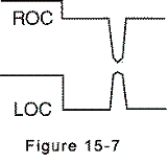
B)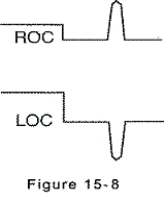
C)
D)
A)

B)

C)

D)

B
The height or depth of the deflection depends on the movement of the eyes relative to the fixed electrodes.Eye movement away from the electrode shows an upward deflection on the electrooculogram,and eye movement toward the electrode shows a downward deflection.
The height or depth of the deflection depends on the movement of the eyes relative to the fixed electrodes.Eye movement away from the electrode shows an upward deflection on the electrooculogram,and eye movement toward the electrode shows a downward deflection.
3
What is the distinguishing feature of the electroencephalogram during sleep stages 3 and 4?
A) Small beta waves
B) Large k-complexes
C) Sleep spindles
D) Large delta waves
A) Small beta waves
B) Large k-complexes
C) Sleep spindles
D) Large delta waves
D
The deepest stages of non-REM sleep (stages 3 and 4)are referred to as slow-wave sleep because of the presence of large delta waves that appear when the sleeper enters these stages.
The deepest stages of non-REM sleep (stages 3 and 4)are referred to as slow-wave sleep because of the presence of large delta waves that appear when the sleeper enters these stages.
4
A sleeper is predisposed to periods of apnea during which of the following non-REM sleep stages?
1)Stage 1
2)Stage 2
3)Stage 3
4)Stage 4
A) 1 and 2
B) 2 and 3
C) 3 and 4
D) 1 and 4
1)Stage 1
2)Stage 2
3)Stage 3
4)Stage 4
A) 1 and 2
B) 2 and 3
C) 3 and 4
D) 1 and 4

Unlock Deck
Unlock for access to all 37 flashcards in this deck.
Unlock Deck
k this deck
5
Normally,the number of cycles of sleep stages that occur per night is ____ cycles.
A) 4 to 6
B) 6 to 8
C) 8 to 10
D) 10 to 12
A) 4 to 6
B) 6 to 8
C) 8 to 10
D) 10 to 12

Unlock Deck
Unlock for access to all 37 flashcards in this deck.
Unlock Deck
k this deck
6
Which stage(s)of sleep is (are)shown in the figure?

A) Stage 1 sleep
B) Stage 2 sleep
C) Stages 3 and 4 sleep
D) Rem sleep

A) Stage 1 sleep
B) Stage 2 sleep
C) Stages 3 and 4 sleep
D) Rem sleep

Unlock Deck
Unlock for access to all 37 flashcards in this deck.
Unlock Deck
k this deck
7
Sleep stage 3 is distinguished from sleep stage 4 by the:
A) Presence of bursts of theta waves
B) Presence of sleep spindles and k-complexes
C) Percentage of large delta waves present on the electroencephalogram
D) Percentage of relatively low-voltage, mixed-frequency waves
A) Presence of bursts of theta waves
B) Presence of sleep spindles and k-complexes
C) Percentage of large delta waves present on the electroencephalogram
D) Percentage of relatively low-voltage, mixed-frequency waves

Unlock Deck
Unlock for access to all 37 flashcards in this deck.
Unlock Deck
k this deck
8
Which stage(s)of sleep is (are)shown in the figure?
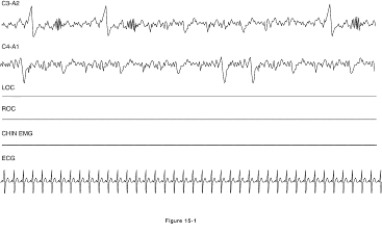
A) Stage 1 sleep
B) Stage 2 sleep
C) Stages 3 and 4 sleep
D) Rem sleep

A) Stage 1 sleep
B) Stage 2 sleep
C) Stages 3 and 4 sleep
D) Rem sleep

Unlock Deck
Unlock for access to all 37 flashcards in this deck.
Unlock Deck
k this deck
9
Which characteristics are associated with REM sleep?
1)Lower level tonic activity
2)High-voltage,low-frequency waves on an electroencephalogram
3)Absence of tonic activity on an electromyogram
4)Often absent responsiveness to external stimuli
A) 1 and 2
B) 3 and 4
C) 1,2,and 4
D) 2,3,and 4
1)Lower level tonic activity
2)High-voltage,low-frequency waves on an electroencephalogram
3)Absence of tonic activity on an electromyogram
4)Often absent responsiveness to external stimuli
A) 1 and 2
B) 3 and 4
C) 1,2,and 4
D) 2,3,and 4

Unlock Deck
Unlock for access to all 37 flashcards in this deck.
Unlock Deck
k this deck
10
The submental electromyogram electrodes are placed in which of the following positions?
1)One on the center of the chin
2)Two along the jawline,3 cm apart
3)Two on the hyoid bone lateral to each other and 2 cm apart
4)One on either side of the chin,between the chin and hyoid bone,2 cm apart
A) 1 and 2
B) 1 and 4
C) 2 and 3
D) 3 and 4
1)One on the center of the chin
2)Two along the jawline,3 cm apart
3)Two on the hyoid bone lateral to each other and 2 cm apart
4)One on either side of the chin,between the chin and hyoid bone,2 cm apart
A) 1 and 2
B) 1 and 4
C) 2 and 3
D) 3 and 4

Unlock Deck
Unlock for access to all 37 flashcards in this deck.
Unlock Deck
k this deck
11
Stage 2 non-REM sleep is characterized by the presence of which of the following?
1)Relatively low-voltage,mixed-frequency waves
2)Sleep spindles
3)Delta waves
4)K-complexes
A) 1 and 3
B) 2 and 4
C) 1 and 4
D) 2,3,and 4
1)Relatively low-voltage,mixed-frequency waves
2)Sleep spindles
3)Delta waves
4)K-complexes
A) 1 and 3
B) 2 and 4
C) 1 and 4
D) 2,3,and 4

Unlock Deck
Unlock for access to all 37 flashcards in this deck.
Unlock Deck
k this deck
12
Sleep spindles occur at a frequency of ____ cycles/s.
A) 4 to 7
B) 9 to 13
C) 14 to 16
D) <3.5
A) 4 to 7
B) 9 to 13
C) 14 to 16
D) <3.5

Unlock Deck
Unlock for access to all 37 flashcards in this deck.
Unlock Deck
k this deck
13
Electrooculogram electrodes are in place,and the eyes are looking up.The electrooculogram recording is shown by which of the following?
A)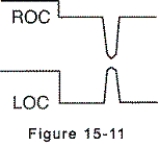
B)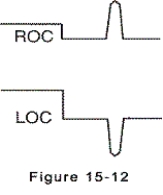
C)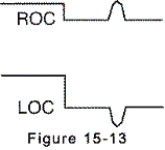
D)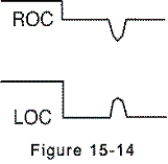
A)

B)

C)

D)


Unlock Deck
Unlock for access to all 37 flashcards in this deck.
Unlock Deck
k this deck
14
Which of the following brain waveforms are present during wakefulness?
1)Alpha waves
2)Beta waves
3)Relatively low-voltage,mixed-frequency waves
4)Delta waves
A) 1 and 2
B) 2 and 3
C) 3 and 4
D) 1,2,and 4
1)Alpha waves
2)Beta waves
3)Relatively low-voltage,mixed-frequency waves
4)Delta waves
A) 1 and 2
B) 2 and 3
C) 3 and 4
D) 1,2,and 4

Unlock Deck
Unlock for access to all 37 flashcards in this deck.
Unlock Deck
k this deck
15
The age at which infants first exhibit the classic sleep stages seen in adults is ____ months.
A) 6
B) 9
C) 12
D) 18
A) 6
B) 9
C) 12
D) 18

Unlock Deck
Unlock for access to all 37 flashcards in this deck.
Unlock Deck
k this deck
16
During a typical night of sleep,a normal adult sleeper cycles between non-REM sleep and REM sleep at approximately every ____ minutes.
A) 30 to 60
B) 60 to 90
C) 90 to 120
D) 120 to 150
A) 30 to 60
B) 60 to 90
C) 90 to 120
D) 120 to 150

Unlock Deck
Unlock for access to all 37 flashcards in this deck.
Unlock Deck
k this deck
17
Slow,rolling,pendulous movement of the eyes is present during which of the following sleep stages?
A) Stage 1 sleep
B) Stage 2 sleep
C) Stages 3 and 4 sleep
D) Rem sleep
A) Stage 1 sleep
B) Stage 2 sleep
C) Stages 3 and 4 sleep
D) Rem sleep

Unlock Deck
Unlock for access to all 37 flashcards in this deck.
Unlock Deck
k this deck
18
Which sleep stage(s)is (are)characterized normally by irregular breathing patterns with short,central periods of apnea and inhibited rib cage muscles and upper airway muscles?
A) Stage 1 sleep
B) Stage 2 sleep
C) Stages 3 and 4 sleep
D) Rem sleep
A) Stage 1 sleep
B) Stage 2 sleep
C) Stages 3 and 4 sleep
D) Rem sleep

Unlock Deck
Unlock for access to all 37 flashcards in this deck.
Unlock Deck
k this deck
19
REM sleep is identified by which of the following measurements?
A) Electrocardiogram
B) Electroencephalogram
C) Electromyogram
D) Electrooculogram
A) Electrocardiogram
B) Electroencephalogram
C) Electromyogram
D) Electrooculogram

Unlock Deck
Unlock for access to all 37 flashcards in this deck.
Unlock Deck
k this deck
20
The electrooculogram electrodes should be placed in which of the following positions?
A)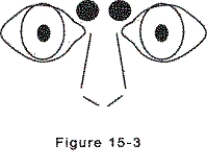
B)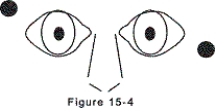
C)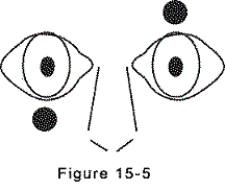
D)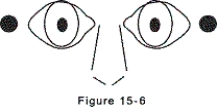
A)

B)

C)

D)


Unlock Deck
Unlock for access to all 37 flashcards in this deck.
Unlock Deck
k this deck
21
Which of the following is (are)potential applications of electromyography?
1)Monitoring activation of the muscles of the upper airway
2)Monitoring contractile strength of the heart
3)Monitoring activity of intercostal muscles
4)Monitoring peripheral perfusion
A) 1 only
B) 1 and 2
C) 1 and 3
D) 2,3,and 4
1)Monitoring activation of the muscles of the upper airway
2)Monitoring contractile strength of the heart
3)Monitoring activity of intercostal muscles
4)Monitoring peripheral perfusion
A) 1 only
B) 1 and 2
C) 1 and 3
D) 2,3,and 4

Unlock Deck
Unlock for access to all 37 flashcards in this deck.
Unlock Deck
k this deck
22
When monitoring nasal airflow,what is the most common problem associated with the use of the pneumotachograph?
A) Change in temperature of expired gas
B) Variability in expiratory flow rates
C) Requirement to reposition the probe
D) Recalibration of the sensor
A) Change in temperature of expired gas
B) Variability in expiratory flow rates
C) Requirement to reposition the probe
D) Recalibration of the sensor

Unlock Deck
Unlock for access to all 37 flashcards in this deck.
Unlock Deck
k this deck
23
Which criteria related to measurements of PETCO₂ are used to determine sleep-disordered breathing in children?
A) PETCO₂ values of >8 mm Hg above baseline
B) PETCO₂ values of >12 mm Hg above baseline
C) PETCO₂ values of >40 mm Hg for at least 25% of total sleep time
D) PETCO₂ values of >45 mm Hg for at least 60% of total sleep time
A) PETCO₂ values of >8 mm Hg above baseline
B) PETCO₂ values of >12 mm Hg above baseline
C) PETCO₂ values of >40 mm Hg for at least 25% of total sleep time
D) PETCO₂ values of >45 mm Hg for at least 60% of total sleep time

Unlock Deck
Unlock for access to all 37 flashcards in this deck.
Unlock Deck
k this deck
24
A K-complex is which of the following?

A) A
B) B
C) C
D) D

A) A
B) B
C) C
D) D

Unlock Deck
Unlock for access to all 37 flashcards in this deck.
Unlock Deck
k this deck
25
The number of apneic periods observed is 15,and the number of hours slept is 5.The apnea index is:
A) 3
B) 8
C) 20
D) 45
A) 3
B) 8
C) 20
D) 45

Unlock Deck
Unlock for access to all 37 flashcards in this deck.
Unlock Deck
k this deck
26
Patients who are at highest risk for developing obstructive sleep apnea include patients with which of the following?
1)Asthma
2)Nuchal obesity
3)Neuromuscular disorders
4)Nasopharyngeal narrowing
A) 1 and 3
B) 2 and 3
C) 2 and 4
D) 1 and 4
1)Asthma
2)Nuchal obesity
3)Neuromuscular disorders
4)Nasopharyngeal narrowing
A) 1 and 3
B) 2 and 3
C) 2 and 4
D) 1 and 4

Unlock Deck
Unlock for access to all 37 flashcards in this deck.
Unlock Deck
k this deck
27
What is the key to recognizing obstructive sleep apnea when the results of a sleep study are analyzed?
A) No airflow and no respiratory effort
B) No airflow with increasing respiratory effort
C) Reduced airflow with minimal respiratory effort
D) No airflow with no or minimal respiratory effort
A) No airflow and no respiratory effort
B) No airflow with increasing respiratory effort
C) Reduced airflow with minimal respiratory effort
D) No airflow with no or minimal respiratory effort

Unlock Deck
Unlock for access to all 37 flashcards in this deck.
Unlock Deck
k this deck
28
Which of the following represents the polysomnographic tracing of a patient with obstructive sleep apnea?
A)
B)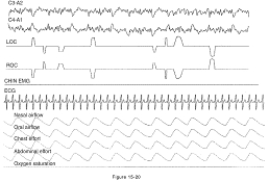
C)
D)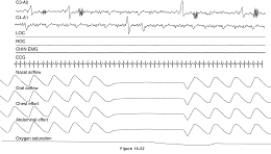
A)

B)

C)

D)


Unlock Deck
Unlock for access to all 37 flashcards in this deck.
Unlock Deck
k this deck
29
Which of the following factors increase a patient's risk for obstructive sleep apnea?
1)Systemic hypertension
2)Exercising late in the day
3)Excessive coffee drinking
4)Alcohol consumption close to bedtime
A) 1 and 2
B) 2 and 3
C) 3 and 4
D) 1 and 4
1)Systemic hypertension
2)Exercising late in the day
3)Excessive coffee drinking
4)Alcohol consumption close to bedtime
A) 1 and 2
B) 2 and 3
C) 3 and 4
D) 1 and 4

Unlock Deck
Unlock for access to all 37 flashcards in this deck.
Unlock Deck
k this deck
30
A patient diagnosed with obstructive sleep apnea would have which of the following polysomnographic testing results?
A) 8 apnea periods, of 4 to 8 seconds' duration, per hour of sleep and an SpO₂ of 90% to 93%
B) 20 apnea periods, of 5 to 9 seconds' duration, per hour of sleep, with no arousals
C) 15 apnea periods, of 15 to 20 seconds' duration, per hour of sleep and bradycardia
D) 5 apnea periods, of approximately 8 seconds' duration each, per hour of sleep, with snoring
A) 8 apnea periods, of 4 to 8 seconds' duration, per hour of sleep and an SpO₂ of 90% to 93%
B) 20 apnea periods, of 5 to 9 seconds' duration, per hour of sleep, with no arousals
C) 15 apnea periods, of 15 to 20 seconds' duration, per hour of sleep and bradycardia
D) 5 apnea periods, of approximately 8 seconds' duration each, per hour of sleep, with snoring

Unlock Deck
Unlock for access to all 37 flashcards in this deck.
Unlock Deck
k this deck
31
Which of the following represents the polysomnographic tracing of a patient with central sleep apnea?
A)
B)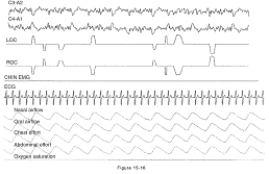
C)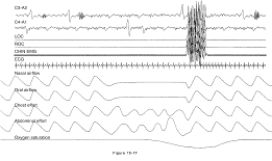
D)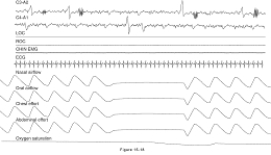
A)

B)

C)

D)


Unlock Deck
Unlock for access to all 37 flashcards in this deck.
Unlock Deck
k this deck
32
The polysomnographic tracing of a patient with mixed apnea is shown by which of the following?
A)
B)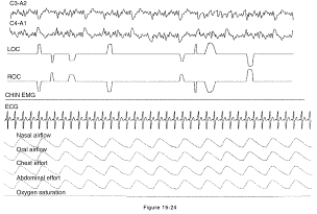
C)
D)
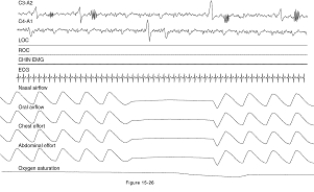
A)

B)

C)

D)


Unlock Deck
Unlock for access to all 37 flashcards in this deck.
Unlock Deck
k this deck
33
Which of the following is a common problem among patients with central sleep apnea?
A) Obesity
B) Insomnia
C) Depression
D) Hypersomnolence
A) Obesity
B) Insomnia
C) Depression
D) Hypersomnolence

Unlock Deck
Unlock for access to all 37 flashcards in this deck.
Unlock Deck
k this deck
34
During polysomnography,the patient has 15 periods of apnea and 10 episodes of hypopnea during 6 hours of sleep.What is their apnea hypopnea index?
A) 2.5
B) 3.5
C) 4.2
D) 5.6
A) 2.5
B) 3.5
C) 4.2
D) 5.6

Unlock Deck
Unlock for access to all 37 flashcards in this deck.
Unlock Deck
k this deck
35
Which factors may augment the symptoms of patients with mild obstructive sleep apnea?
1)Excessive day-shift work
2)Sleep deprivation
3)Respiratory allergies
4)Scuba diving
A) 1 and 2
B) 2 and 3
C) 3 and 4
D) 1 and 4
1)Excessive day-shift work
2)Sleep deprivation
3)Respiratory allergies
4)Scuba diving
A) 1 and 2
B) 2 and 3
C) 3 and 4
D) 1 and 4

Unlock Deck
Unlock for access to all 37 flashcards in this deck.
Unlock Deck
k this deck
36
The criteria for diagnosing obstructive sleep apnea with polysomnography include which of the following?
A) More than 2 periods of obstructive apnea, of 15 seconds' duration each, per hour
B) More than 5 periods of obstructive apnea, of 10 seconds' duration each, per hour
C) At least 5 periods of obstructive apnea, of 30 seconds' duration each, per hour
D) At least 10 periods of obstructive apnea, of 20 seconds' duration each, per hour
A) More than 2 periods of obstructive apnea, of 15 seconds' duration each, per hour
B) More than 5 periods of obstructive apnea, of 10 seconds' duration each, per hour
C) At least 5 periods of obstructive apnea, of 30 seconds' duration each, per hour
D) At least 10 periods of obstructive apnea, of 20 seconds' duration each, per hour

Unlock Deck
Unlock for access to all 37 flashcards in this deck.
Unlock Deck
k this deck
37
Which oxygen desaturation level is generally considered abnormal in children?
A) <98%
B) <95%
C) <92%
D) <90%
A) <98%
B) <95%
C) <92%
D) <90%

Unlock Deck
Unlock for access to all 37 flashcards in this deck.
Unlock Deck
k this deck



